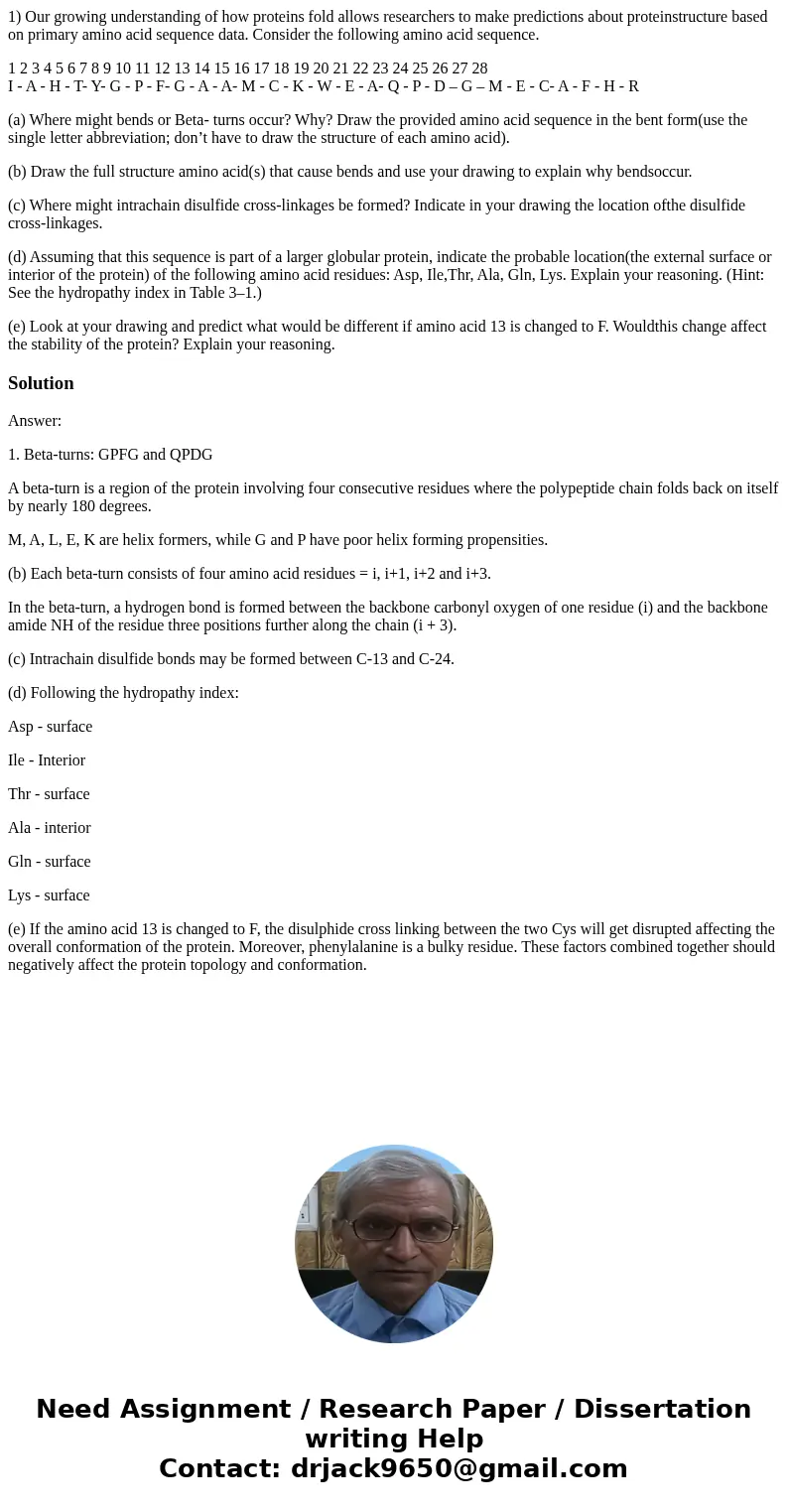1 Our growing understanding of how proteins fold allows rese
1) Our growing understanding of how proteins fold allows researchers to make predictions about proteinstructure based on primary amino acid sequence data. Consider the following amino acid sequence.
1 2 3 4 5 6 7 8 9 10 11 12 13 14 15 16 17 18 19 20 21 22 23 24 25 26 27 28
I - A - H - T- Y- G - P - F- G - A - A- M - C - K - W - E - A- Q - P - D – G – M - E - C- A - F - H - R
(a) Where might bends or Beta- turns occur? Why? Draw the provided amino acid sequence in the bent form(use the single letter abbreviation; don’t have to draw the structure of each amino acid).
(b) Draw the full structure amino acid(s) that cause bends and use your drawing to explain why bendsoccur.
(c) Where might intrachain disulfide cross-linkages be formed? Indicate in your drawing the location ofthe disulfide cross-linkages.
(d) Assuming that this sequence is part of a larger globular protein, indicate the probable location(the external surface or interior of the protein) of the following amino acid residues: Asp, Ile,Thr, Ala, Gln, Lys. Explain your reasoning. (Hint: See the hydropathy index in Table 3–1.)
(e) Look at your drawing and predict what would be different if amino acid 13 is changed to F. Wouldthis change affect the stability of the protein? Explain your reasoning.
Solution
Answer:
1. Beta-turns: GPFG and QPDG
A beta-turn is a region of the protein involving four consecutive residues where the polypeptide chain folds back on itself by nearly 180 degrees.
M, A, L, E, K are helix formers, while G and P have poor helix forming propensities.
(b) Each beta-turn consists of four amino acid residues = i, i+1, i+2 and i+3.
In the beta-turn, a hydrogen bond is formed between the backbone carbonyl oxygen of one residue (i) and the backbone amide NH of the residue three positions further along the chain (i + 3).
(c) Intrachain disulfide bonds may be formed between C-13 and C-24.
(d) Following the hydropathy index:
Asp - surface
Ile - Interior
Thr - surface
Ala - interior
Gln - surface
Lys - surface
(e) If the amino acid 13 is changed to F, the disulphide cross linking between the two Cys will get disrupted affecting the overall conformation of the protein. Moreover, phenylalanine is a bulky residue. These factors combined together should negatively affect the protein topology and conformation.

 Homework Sourse
Homework Sourse